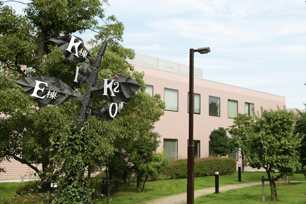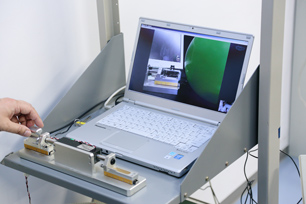Keio University Branches Out: Campuses Established Through Regional Collaboration and Domestic and Overseas Bases (1)
Aside from the six major campuses at Keio University, there are a number of affiliated academic institutions and offices within and outside Japan, each with its own characteristics. At the Town Campuses, which were established in cooperation with the local cities and regions they are located in, Keio faculty members and researchers, and Keio students conduct world-leading, cutting-edge research while strengthening their ties with the region and the local communities. There are also offices that function as overseas bases for Keio. In this special feature we turn a spotlight on Keio branching out into the world and into the future.
Shin-Kawasaki Town Campus
Industry-Government-Academia-Region Collaborative Research Campus Providing Convenience and an Optimal Research Environment


The Shin-Kawasaki Town Campus, established in 2000 in cooperation with the city of Kawasaki, is located in Saiwai-ku, Kawasaki City, just a little less than 2km as the crow flies from Hiyoshi and Yagami Campuses. The campus takes a pragmatic approach to research to reciprocate the benefits of its research to society; Keio faculty members and researchers, and graduate students are currently developing around twenty projects including those that cross freely over different academic fields as well as research on the practical application of state-of-the-art technology to industry.
The campus is also known as K2 (K square) Town Campus. The two “Ks” stand for Keio University and Kawasaki City, and its naming is derived from the concept that the amount of results generated from the cooperation of the two “Ks” through collaboration with industry-government-academia is not simply doubled but squared. The K2 Town Campus is located in what is known as the “Shin-Kawasaki Forest of Creation” area, surrounded by verdant landscaping dotted with parks. In the neighboring area, there are numerous research institutes for large corporations as well as medium-sized companies pursuing the most advanced technology, which are actively engaging in the exchange of ideas and opinions through seminars and other various mediums.

One of the projects conducted at the K2 Town Campus is the “haptics project” led by Professor Kouhei Ohnishi (Keio Faculty of Science and Technology) at the Ohnishi Laboratory. Haptics refers to the discipline and technology which engineer the human sense of touch (tactile feedback) and is developed to assist human activities.
“Sensors can be used to reproduce tactile sensations from remote locations, but many researchers have given up this type of research as the method has its limitations in sensing subtle textures and recreating fine and detailed motions. However, the world’s first “real-world haptics” technology developed at the Ohnishi Laboratory can remotely control and reproduce tactile sensation of the skin and delicate motions using technology that enables electrical manipulation of both position and force information. A “touch” is worth a thousand words, so I invite you to experience it for yourself,” explains Professor Ohnishi.
For example, a haptic device presses down onto a sponge on one end, the data of which is transmitted wirelessly to another device. By pushing the lever, the tactile sensation of the sponge being pressed is replicated realistically. The distinct sensation of pulling off Velcro can also be reproduced quite accurately. One experiment involved the reproduction of the sensation of popping a balloon using a remote conference system. In the experiment, the balloon on Yagami Campus was monitored through a computer screen on the K2 Town Campus, and despite the distance between the two campuses, the elasticity of the balloon as well as the sensation of the balloon bursting felt surprisingly real (above left image).
“We originally started this research at the request of the Keio University School of Medicine to develop surgical robots, but real-world haptics technology goes beyond medical application and can be utilized for other human activities in remote locations.” We may see the practical applications of this cutting-edge technology originating from the K2 Town Campus laboratory in the not-so-distant future.
Travelling to and from Yagami Campus by Shuttle Bus, a Research Campus Equipped with Sleeping Facilities


Kazuki Tanida and Seinan Kyo are graduate students at the Ohnishi Laboratory. The laboratory is split up by research theme; research on haptics technology is conducted on K2 Town Campus, and bipedal walking robots are the focus of research on Yagami Campus.
“I am involved in both areas of research and regularly come-and-go between the two campuses. What is good about the laboratory on K2 Town Campus is that it is spacious, so experiments and work can be carried out quite comfortably. The K2 House is equipped with sleeping facilities, so conducting overnight experiments is no stress.” (Kazuki Tanida)
“My laboratory is at the K2 Town Campus, but I also commute between the two campuses frequently as my classes are at Yagami. The trip takes around ten minutes by shuttle bus. The buses operate according to the class timetable so I find this very convenient.” (Seinan Kyo)
Another appealing aspect of the K2 Town Campus is its quiet setting with parks and ponds that provides an optimal environment to focus on research. Learning under Professor Ohnishi, both students feel a true sense of fulfillment as well as a profound sense of mission.
Keio University Branches Out: Campuses Established Through Regional Collaboration and Domestic and Overseas Bases (2) is scheduled to be updated around February 2
